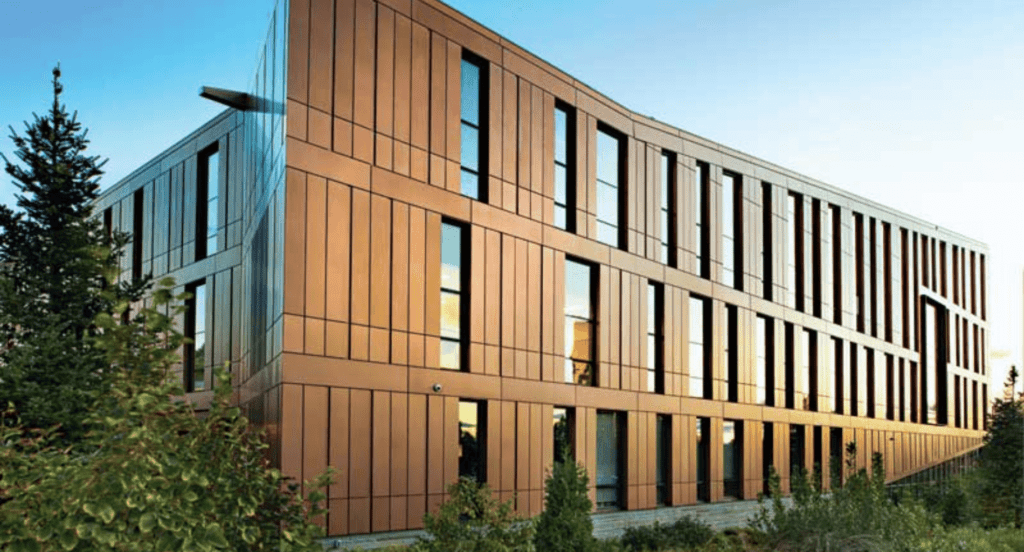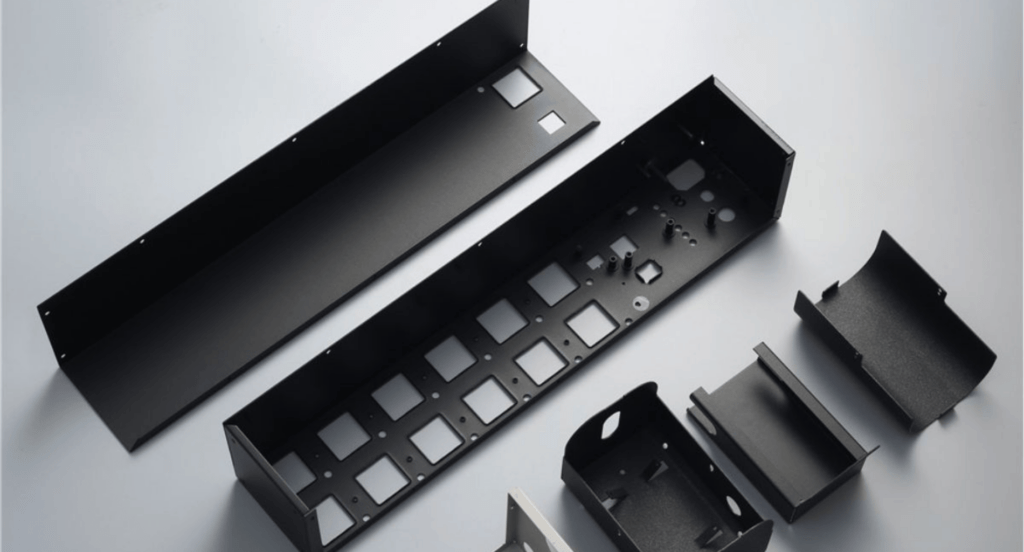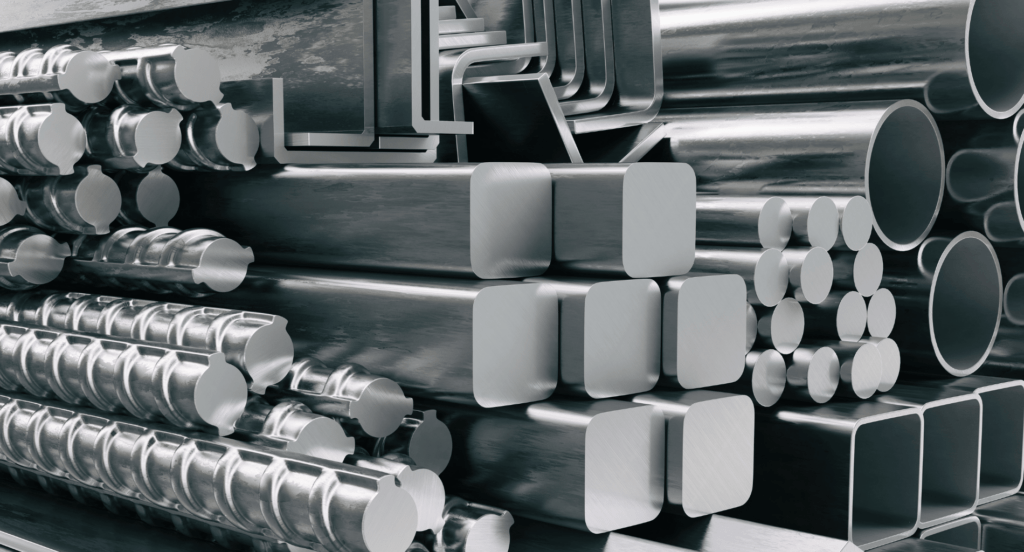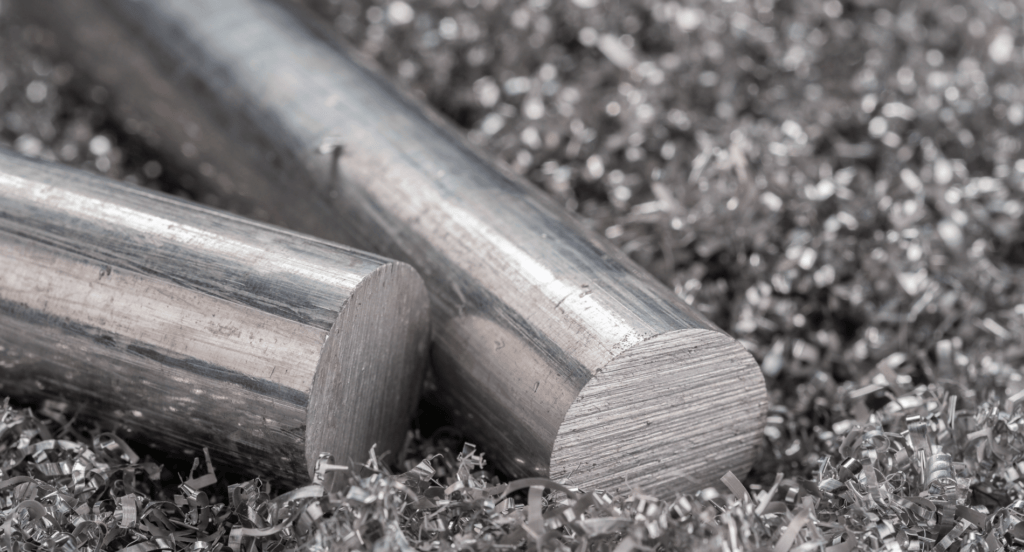Is anodized steel the game-changer your business needs? This robust and versatile material is making a change in the metal fabrication industry.
With years of experience in metal fabrication, I understand the nuances that can make or break a project.
Anodized steel is more than just a durable material. Its unique properties, including increased corrosion resistance and enhanced aesthetic appeal, make it an ideal choice for a wide range of applications.
In this article, you’ll discover the process, benefits, and applications of anodized steel, providing you with the knowledge to make informed decisions for your business.
Keep reading to unlock the full potential of anodized steel.
1. Overview of Anodized Steel
Anodized metal, particularly steel, gains its high-end characteristics through an electrochemical process that strengthens its natural oxide layer. This treatment not only fortifies the steel but also allows for a variety of anodized color, which can be tailored to specific aesthetic preferences without compromising the metal’s structural integrity.
The versatility of anodized steel makes it a favorite among industries requiring both durability and design flexibility. Its application ranges from architectural frameworks to automotive parts, offering a unique combination of strength and style that stands the test of time.
2. Advantages of Anodized Steel
Building on the overview of anodized steel, it’s essential to delve deeper into the specific benefits this material offers. Here are the key advantages:
- Enhanced Durability: Anodized steel boasts an increased resistance to wear and tear compared to its non-anodized counterparts. The anodization process thickens the metal’s natural oxide layer, making it less susceptible to scratches, abrasions, and the long-term effects of environmental exposure.
- Corrosion Resistance: One of the most significant benefits of anodizing steel is its improved resistance to corrosion. This protective layer acts as a barrier against rust and degradation, which is crucial for metal components exposed to harsh weather or corrosive substances.
- Aesthetic Appeal: Anodizing allows for a variety of color finishes that retain steel’s luster and texture. This process not only enhances the visual quality of the metal but also provides a more consistent appearance that can withstand fading over time.
- Easy Maintenance: The smooth and non-porous surface of anodized steel is much easier to clean and maintain. It doesn’t require special cleaners or treatments, making it a practical option for applications where hygiene and minimal maintenance are priorities.
3. Properties of Anodized Steel
After considering the advantages of anodized steel detailed in the previous section, it’s equally important to delve into the intrinsic properties that make this material stand out in various applications. Here are the key properties of anodized steel:
Hardness and Strength
Anodized steel is renowned for its enhanced surface hardness, which is significantly increased through the anodizing process. At Zemetal, we recognize that this augmented hardness is a critical attribute, making the material incredibly resistant to physical stresses and capable of enduring heavy usage without compromising its structural integrity.
Thermal Insulation
The anodizing process not only imparts strength but also improves the thermal insulation properties of steel. This can play a pivotal role in environments where controlling heat exchange is vital. For instance, in building construction, anodized steel can contribute to the energy efficiency of a structure by minimizing heat loss or gain, thus reducing the reliance on heating, ventilation, and air conditioning systems.
Electrical Insulation
Anodized steel’s properties extend into the realm of electrical insulation. The anodized layer that forms on the steel surface is non-conductive, which effectively prevents the passage of electrical current. This characteristic can be particularly advantageous in electrical applications, where preventing unintentional current flow is paramount for safety and functionality.
The table below outlines key properties of anodized steel that highlight its effectiveness as an electrical insulator, underscoring its importance in enhancing safety and functionality in electrical applications.
| Property | Description |
| Electrical Insulation | Anodized steel’s surface layer is non-conductive, blocking the flow of electrical current. |
| Corrosion Resistance | The anodized layer enhances resistance to corrosion, contributing to the longevity of components. |
| Surface Hardness | Anodization increases the surface hardness, offering protection against physical damage. |
| Thermal Resistance | Anodized steel can withstand high temperatures without compromising its insulating properties. |
| Aesthetic Finish | The process allows for a variety of colors, improving the appearance alongside its functionality. |
4. Applications of Anodized Steel
With a clear understanding of the advantages and properties of anodized steel from the previous sections, it’s time to explore how these benefits translate into practical applications. Here are the diverse and impactful uses of anodized steel across various industries:
Architectural Construction
Anodized steel is a mainstay in modern architectural design due to its durability and aesthetic flexibility. It’s often used for exterior cladding, roofing, and other structural components that demand a long lifespan and minimal maintenance. The material’s ability to withstand harsh environmental conditions while maintaining its appearance makes it ideal for both commercial and residential buildings.

Automotive and Aerospace Components
The automotive and aerospace industries value anodized steel for its strength-to-weight ratio and corrosion resistance. It is utilized in the manufacturing of vital components where failure is not an option, such as in safety mechanisms, support structures, and body panels. Anodized steel parts contribute to the overall longevity and reliability of vehicles and aircraft, all while reducing their weight for improved fuel efficiency.

Consumer Electronics
In the consumer electronics market, which Zion Industry Research predicts will grow at a CAGR of 7.6% from 2022 to 2028, the use of anodized steel is increasingly significant. This material stands out for its durability and design, making it a top choice for manufacturing smartphones, laptops, and other devices. Anodized steel also ensures a strong framework that effectively shields sensitive electronic components.

5. Anodized Steel vs. Other Metals
After exploring the various applications of anodized steel, it’s beneficial to compare it with other commonly used metals. Here are the comparisons between anodized steel and other metals based on key criteria:
Anodized Steel vs. Stainless Steel
Anodized steel is treated to develop a thick oxide layer, which enhances its resistance to corrosion beyond what stainless steel can naturally offer. However, stainless steel inherently resists rust due to its chromium content without the need for additional treatments. The choice between the two often comes down to the specific environmental conditions the material will face and the desired aesthetic outcome.

Anodized Steel vs. Aluminum
Aluminum is well-known for its lightweight properties and natural corrosion resistance, and when anodized. Anodized steel, on the other hand, provides greater strength and wear resistance due to its denser structure. For example, in applications that prioritize heavy-duty performance and impact resistance, anodized steel is typically the preferred choice over even anodized aluminum.

Anodized Steel vs. Carbon Steel
Carbon steel is a popular material due to its strength and versatility, but it lacks the natural corrosion resistance of anodized steel. Anodizing not only improves steel’s resistance to corrosion but also enhances its surface properties, making anodized steel a more suitable option for applications requiring both durability and a higher level of environmental resistance.

6. Challenges and Limitations in Working with Anodized Steel
While anodized steel is an exceptional material with a broad range of applications as discussed earlier, working with it does present certain challenges and limitations that must be considered. Here are the primary issues to be aware of:
Challenges in Fabrication
- Machining Difficulty: The increased hardness of anodized steel can wear out tools more quickly, requiring specialized equipment or frequent tool replacement.
- Welding Complexity: Welding anodized steel can be difficult because the anodized layer must be removed at weld points, which can affect the integrity of the protective coating.
- Color Consistency: Achieving uniform color during the anodizing process can be tricky, especially for large or complex parts, which may result in color variance.
Limitations in Use
- Cost Considerations: Anodizing steel can be more expensive than other treatments, making it less cost-effective for projects with tight budgets.
- Thickness Restrictions: There is a limit to how thick the anodized layer can be, which may affect the level of protection and durability in extreme conditions.
- Repair and Maintenance: If the anodized layer is damaged, repairing it to its original state can be challenging and may not always be possible, potentially affecting the longevity and appearance of the material.
7. 3 Tips for Maintenance and Longevity of Anodized Steel
Taking into account the challenges of maintaining anodized steel, here are some tips for maintenance and longevity of anodized steel:
#1 Regular Cleaning and Care
Regular cleaning should be done with a mild detergent solution and plenty of water, using a soft cloth or brush to gently wipe the surface. Rinse the surface thoroughly with clean water to remove any soap residue. It’s important to avoid using abrasive materials or harsh chemicals that can scratch or damage the anodized finish.
#2 Protective Measures
To protect the anodized steel from scratches and wear, apply a thin layer of wax or sealant designed for anodized surfaces. These anodizing seal process can create a barrier against contaminants and minor abrasions. Additionally, at Zemetal, we suggest that it’s wise to minimize the material’s exposure to harsh conditions, such as abrasive chemicals or extreme temperatures, which could compromise the anodized layer.
#3 Inspection and Preventative Maintenance
Schedule periodic inspections of anodized steel installations to check for signs of wear, corrosion, or damage to the anodized layer. If any damage is detected, it should be addressed promptly to prevent further degradation. For structural applications, it’s crucial to consult with maintenance professionals who can provide specialized care and advice.
Conclusion
Anodized steel is more than just a material; it’s a solution that brings longevity, aesthetic appeal, and robustness to your metal fabrication needs. Its versatility and durability make it an excellent choice for businesses seeking to enhance the quality and lifespan of their products.
At Zemetal, we specialize in providing top-notch metal fabrication services, tailored to meet the diverse needs of our clients. Contact us today to explore how we can assist in elevating your metal fabrication endeavors.
Dive Deeper Into Our Resources
Looking for more diverse service options? Browse through our handpicked selections:
For some insightful reads, we’ve curated a list of recommended articles just for you:
Still haven’t found what you’re looking for? Don’t hesitate to contact us. We’re available around the clock to assist you.








